Ateneans reflect on Moro and Lumad issues in Mindanao
In the midst of the impending passage of the Bangsamoro Basic Law (BBL) and the attacks on the Lumad, students from the Ateneo de Manila University took time to address issues concerning the Moro and Lumad people in a forum held at the Leong Hall Roofdeck on November 6, 2015.
The State of Mindanao Address (SOMA) 2015 presented the socio-historical, ethnic perspectives of the Mindanao issue.
In his opening remarks, Atty. Jaime Hofileña, Vice President for Social Develoment, stressed SOMA’s objective — “to gain greater awareness of the situation in Mindanao.” The forum, he added, was inspired by the Jesuit roadmap to go to the poor and the periphery.
The first speaker, Sociology and Anthropology Assistant Professor Jose Jowel Canuday focused on the history of the Mindanao conflict. The issue may be traced to the 1950s following the resettlement policies that encouraged Luzon and Visayas-based Filipino Christians to migrate to Mindanao. At that time, majority of people living in Mindanao were Filipinos practicing Islam. The demographic shift coupled with the rise of secessionist movements like the Moro National Liberation Front intensified the friction in the region.
The ongoing conflict has resulted in the loss of 120,000 lives, Canuday said. Mindanao, he added, has to grapple with the multi-layered conflicts, justice issues and diverse actors.
Meanwhile, Datu Mussolini Sinsuat Lidasan, the Executive Director of Al Qalam Institute for Islamic Identities and Dialogues in Southeast Asia, said that the Mindanao conflict is a conflict of narratives.
“If particular narratives define identity, is there a way to build a convergence around these narratives?” he asked.
The issue at hand is a matter of recognizing multiple identities, he said. Lidasan proposed an in-depth analysis of understanding the complexities of these identities.
A conflict of narratives is how Datu Mussolini Sinsuat Lidasan describes the Mindanao conflict.
These identities, he added, are not “insurmountable blocks in achieving such understanding.” Rather, Lidasan pointed out that identities are locations from which each must work and understanding the dynamics, assertion and interlocking of these multiple identities— as a Filipino and a Bangsamoro must be addressed well for peace in Mindanao to be achieved
The last speaker, Fr. Albert Alejo SJ, called for an inclusive peace that includes the indigenous tribe of Lumads in Mindanao.
SOMA 2015 aims to raise awareness on the issues affecting Mindanao.
The Lumad people, he said are often left out in talks about Mindanao. The first draft of the proposed BBL, for example, does not include them, Alejo said.
Fr. Albert Alejo SJ calls for an inclusive peace that includes the indigenous tribe of Lumads in Mindanao.
SOMA 2015 was organized by the Office of the Vice President for Social Development in partnership with the Ateneo Student Catholic Action.
